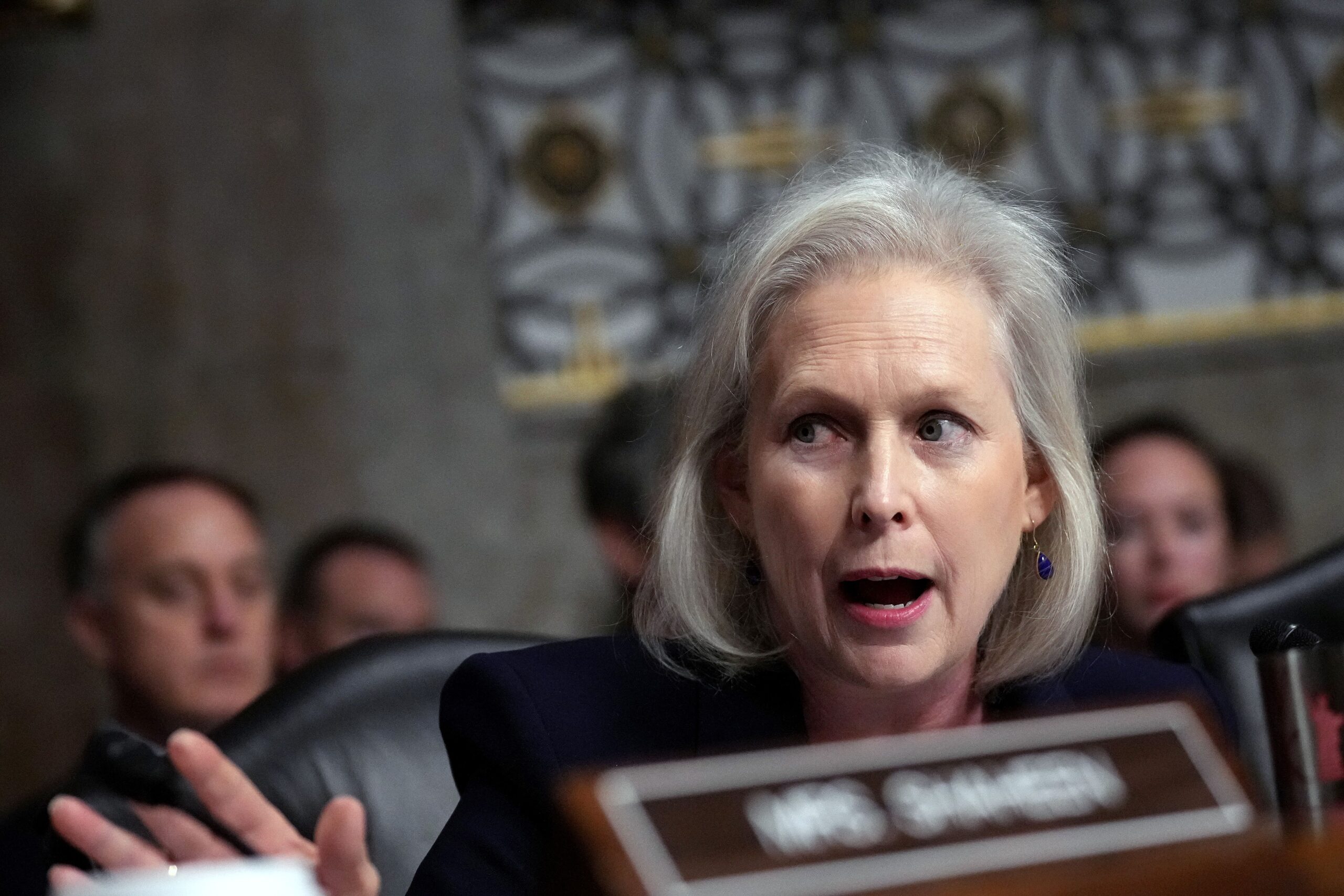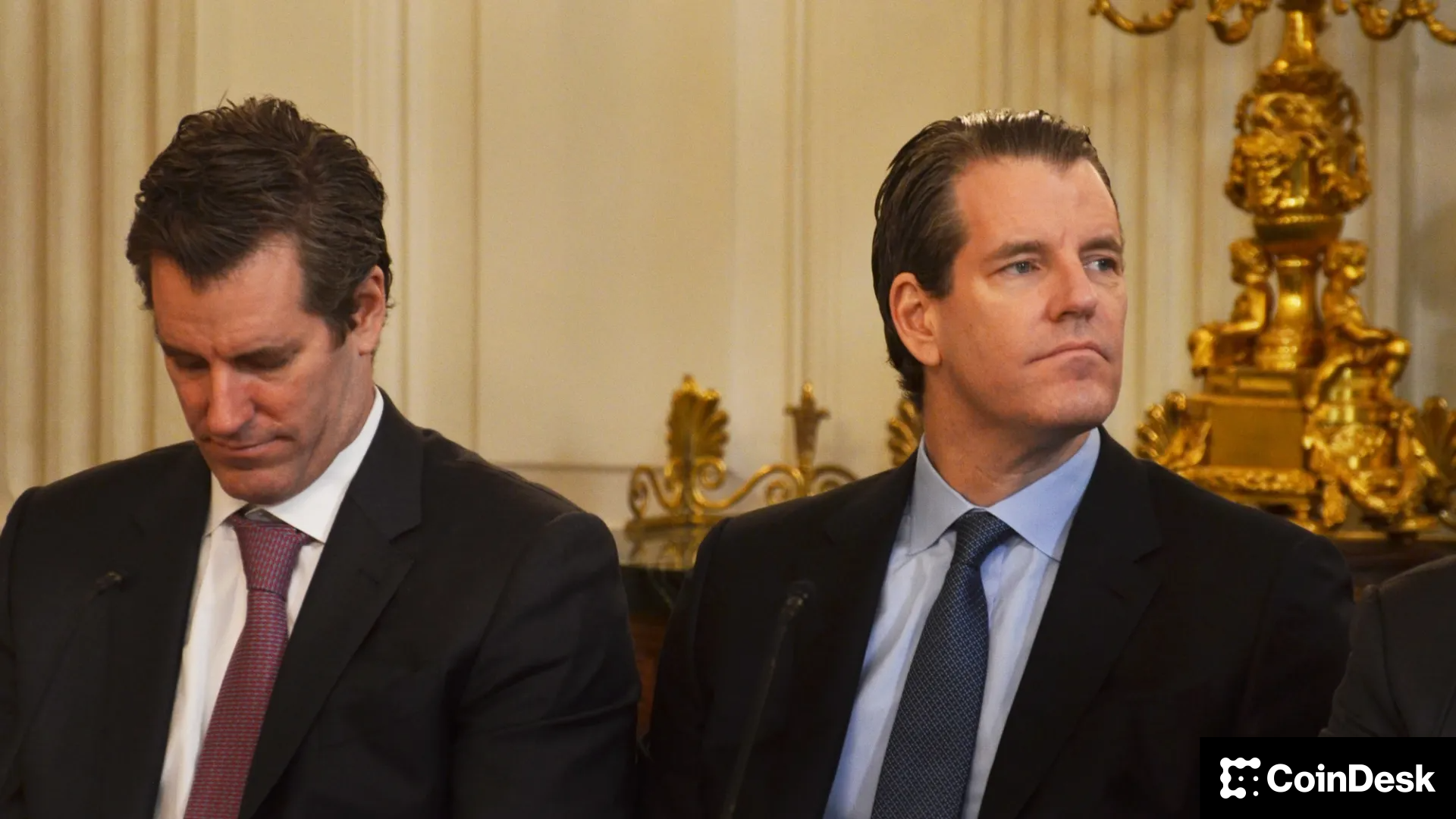Uncategorized
Sen. Gillibrand Warns Against a ‘Watered-Down’ Stablecoin Bill

U.S. Senator Kirsten Gillibrand (D-N.Y.), one of the leading Democrats supporting crypto legislation, warned the industry against pushing for a “watered-down” version of the long-awaited stablecoin legislation currently moving through the Senate, arguing that stringent regulations are necessary to foster innovation and protect investors from bank runs like the one on Silicon Valley Bank in 2023 and the collapse of crypto exchange FTX in 2022.
Speaking at the D.C. Blockchain Summit in Washington, D.C. on Wednesday, Gillibrand said that the bipartisan stablecoin bill — Guiding and Establishing National Innovation for U.S. Stablecoins Act (GENIUS Act) — creates a number of protections for consumers in the event of an issuer bankruptcy scenario.
“You have to think through all the ways this can go wrong. Something as simple as how you define a dollar — is a Treasury the same as a dollar? What happens if your 1-to-1 backing is all in Treasuries and you have an interest rate misalignment like SVB just did, and you have a run on your stablecoin and all your dollar-to-dollar backing is in a three-month Treasury that you can’t get out of – that’s a run on your stablecoin, that’s a collapse,” Gillibrand said.
If dollar-backing requirements are not met or enforced, Gillibrand said: “You’ll just have another FTX. You’ll just have another algorithmic stablecoin that plunges because it never really made sense. That is a huge problem for the U.S. market.”
“The worst thing we could do is water it down,” Gillibrand said. “Do not think that a watered-down bill will help your industry. It will destroy your industry. Because one more SVB, one more algorithmic stablecoin [collapse], just continues to create such uncertainty that nobody wants to do business in the United States.”
After years of false starts, stablecoin legislation appears to finally be gaining momentum. Earlier this month, the U.S. Senate Banking Committee voted to advance the GENIUS Act to a Senate-wide vote. A similar bill from the U.S. House of Representatives is expected to go public on Wednesday.
Read more: U.S. House Stablecoin Bill Poised to Go Public Lawmaker Atop Crypto Panel Says
Gillibrand said that if Congress is able to get the GENIUS Act signed into law, it is then more likely to be able to make progress on a market structure bill.
“A market structure bill is much more complex. It regulates the entire industry, not just one version of a digital asset,” Gillibrand said. “So it’s really important that we do this right so we can move to something much bigger, and something we need to build even broader consensus around.”
A market structure bill would create a regulatory framework for the crypto industry as a whole, giving crypto companies and digital asset issuers clearer rules of the road and a framework to determine whether their tokens are securities or not — and therefore, who their primary regulator is.
Speaking on the same panel, Sen. Bernie Moreno (R-Ohio) suggested that any digital asset with a centralized issuer is likely to be a security, not a commodity.
“If your digital currency has a CEO it’s not a commodity, by definition,” Moreno said.
During another panel discussion at the same event on Wednesday, Sen. Tim Scott (R-S.C.), said the future market structure bill would need to “find a way to create a structure that works beyond the two major categories” of security vs. commodity.
Moreno said he wanted to see the GENIUS Act passed before the August recess.
“I’m gonna lay out the gauntlet — let’s get this done by August recess, what do you think? Markets structure, GENIUS Act, [Strategic Bitcoin Reserve], all done by August,” Moreno said.
Gillibrand tempered expectations, telling Moreno that there was no way to get a market structure bill done by August, but that Congress is “definitely going to get stablecoins done” before the summer break — perhaps, she amended, even before the Easter recess in April, “if we’re really productive.”
Business
Crypto Trading Firm Keyrock Buys Luxembourg’s Turing Capital in Asset Management Push

Crypto trading firm Keyrock said it’s expanding into asset and wealth management by acquiring Turing Capital, a Luxembourg-registered alternative investment fund manager.
The deal, announced on Tuesday, marks the launch of Keyrock’s Asset and Wealth Management division, a new business unit dedicated to institutional clients and private investors.
Keyrock, founded in Brussels, Belgium and best known for its work in market making, options and OTC trading, said it will fold Turing Capital’s investment strategies and Luxembourg fund management structure into its wider platform. The division will be led by Turing Capital co-founder Jorge Schnura, who joins Keyrock’s executive committee as president of the unit.
The company said the expansion will allow it to provide services across the full lifecycle of digital assets, from liquidity provision to long-term investment strategies. «In the near future, all assets will live onchain,» Schnura said, noting that the merger positions the group to capture opportunities as traditional financial products migrate to blockchain rails.
Keyrock has also applied for regulatory approval under the EU’s crypto framework MiCA through a filing with Liechtenstein’s financial regulator. If approved, the firm plans to offer portfolio management and advisory services, aiming to compete directly with traditional asset managers as well as crypto-native players.
«Today’s launch sets the stage for our longer-term ambition: bringing asset management on-chain in a way that truly meets institutional standards,» Keyrock CSO Juan David Mendieta said in a statement.
Read more: Stablecoin Payments Projected to Top $1T Annually by 2030, Market Maker Keyrock Says
Business
Crypto Trading Firm Keyrock Buys Luxembourg’s Turing Capital in Asset Management Push

Crypto trading firm Keyrock said it’s expanding into asset and wealth management by acquiring Turing Capital, a Luxembourg-registered alternative investment fund manager.
The deal, announced on Tuesday, marks the launch of Keyrock’s Asset and Wealth Management division, a new business unit dedicated to institutional clients and private investors.
Keyrock, founded in Brussels, Belgium and best known for its work in market making, options and OTC trading, said it will fold Turing Capital’s investment strategies and Luxembourg fund management structure into its wider platform. The division will be led by Turing Capital co-founder Jorge Schnura, who joins Keyrock’s executive committee as president of the unit.
The company said the expansion will allow it to provide services across the full lifecycle of digital assets, from liquidity provision to long-term investment strategies. «In the near future, all assets will live onchain,» Schnura said, noting that the merger positions the group to capture opportunities as traditional financial products migrate to blockchain rails.
Keyrock has also applied for regulatory approval under the EU’s crypto framework MiCA through a filing with Liechtenstein’s financial regulator. If approved, the firm plans to offer portfolio management and advisory services, aiming to compete directly with traditional asset managers as well as crypto-native players.
«Today’s launch sets the stage for our longer-term ambition: bringing asset management on-chain in a way that truly meets institutional standards,» Keyrock CSO Juan David Mendieta said in a statement.
Read more: Stablecoin Payments Projected to Top $1T Annually by 2030, Market Maker Keyrock Says
Business
Gemini Shares Slide 6%, Extending Post-IPO Slump to 24%

Gemini Space Station (GEMI), the crypto exchange founded by Cameron and Tyler Winklevoss, has seen its shares tumble by more than 20% since listing on the Nasdaq last Friday.
The stock is down around 6% on Tuesday, trading at $30.42, and has dropped nearly 24% over the past week. The sharp decline follows an initial surge after the company raised $425 million in its IPO, pricing shares at $28 and valuing the firm at $3.3 billion before trading began.
On its first day, GEMI spiked to $45.89 before closing at $32 — a 14% premium to its offer price. But since hitting that high, shares have plunged more than 34%, erasing most of the early enthusiasm from public market investors.
The broader crypto equity market has remained more stable. Coinbase (COIN), the largest U.S. crypto exchange, is flat over the past week. Robinhood (HOOD), which derives part of its revenue from crypto, is down 3%. Token issuer Circle (CRCL), on the other hand, is up 13% over the same period.
Part of the pressure on Gemini’s stock may stem from its financials. The company posted a $283 million net loss in the first half of 2025, following a $159 million loss in all of 2024. Despite raising fresh capital, the numbers suggest the business is still far from turning a profit.
Compass Point analyst Ed Engel noted that GEMI is currently trading at 26 times its annualized first-half revenue. That multiple — often used to gauge whether a stock is expensive — means investors are paying 26 dollars for every dollar the company is expected to generate in sales this year. For a loss-making company in a volatile sector, that’s a steep price, and could be fueling investor skepticism.
-

 Business11 месяцев ago
Business11 месяцев ago3 Ways to make your business presentation more relatable
-

 Fashion11 месяцев ago
Fashion11 месяцев agoAccording to Dior Couture, this taboo fashion accessory is back
-

 Entertainment11 месяцев ago
Entertainment11 месяцев ago10 Artists who retired from music and made a comeback
-

 Entertainment11 месяцев ago
Entertainment11 месяцев ago\’Better Call Saul\’ has been renewed for a fourth season
-

 Entertainment11 месяцев ago
Entertainment11 месяцев agoNew Season 8 Walking Dead trailer flashes forward in time
-

 Business11 месяцев ago
Business11 месяцев ago15 Habits that could be hurting your business relationships
-

 Entertainment11 месяцев ago
Entertainment11 месяцев agoMeet Superman\’s grandfather in new trailer for Krypton
-

 Entertainment11 месяцев ago
Entertainment11 месяцев agoDisney\’s live-action Aladdin finally finds its stars




